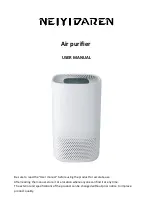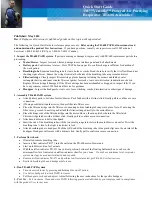
Page 10 of 12
To clean calcium deposits that builds up inside the water tank, add one or two
tablespoons of white vinegar to a full tank and then shake.
Note:
Do not turn the steamer on.
Removing Limescale
If the appliance begins to produce steam more slowly than usual or stops producing
steam, you may need to remove limescale.
Limescale can develop over time on the metal parts of the appliance and greatly affect
its performance. It is recommended to remove limescale on a moment basis or after
every 25-50 uses.
The frequency of removal depends on the hardness of your tap water and how often
you use your steamer. If you live in an especially hard water area, you may need to
use de-mineralized water.
Using a Cleaning Solution
Prepare a solution of 1/3 white vinegar and 2/3 tap water and add to the water tank.
Secure and position the unit to ensure any steam released is aimed away from the
floor or surrounding objects and surfaces.
Plug the appliance into the mains power supply and turn on; allow the unit to produce
steam until all the solution is used.
Repeat the above procedures as often as necessary then fill the tank with fresh water
and rinse.
Fill the tank to the max. level with fresh water, switch on and release steam through
the system until the water tank is empty.
Warning:
Do not leave the steamer unattended during the limescale removal process
and/or during use.
Note:
Perform a test on a suitable isolated surface after limescale removal to ensure
there is no debris left in the unit.
Note:
Due to the mature of UK water suppliers, some areas of the country experience
large amounts of limescale build-up. If you live in one of these areas you may need to
decalcify the unit more often.






























